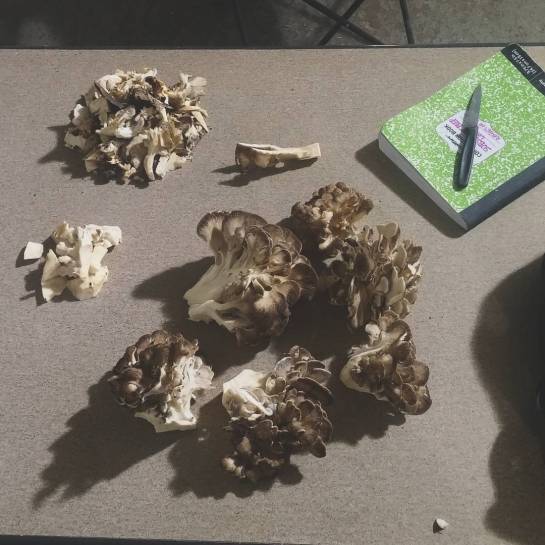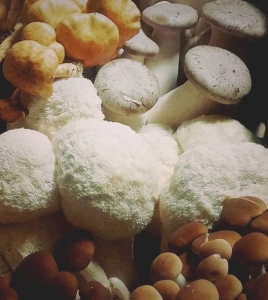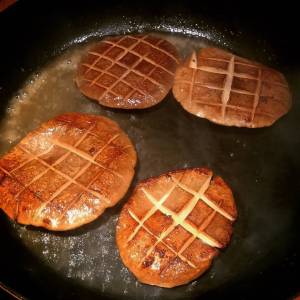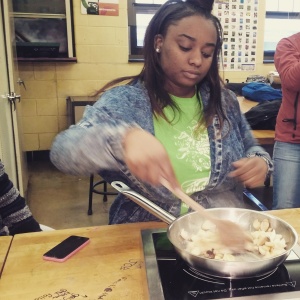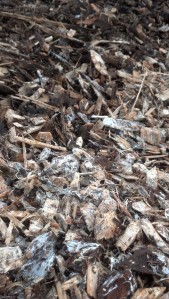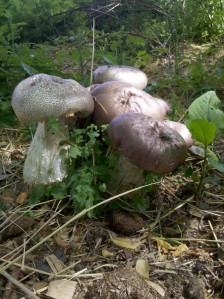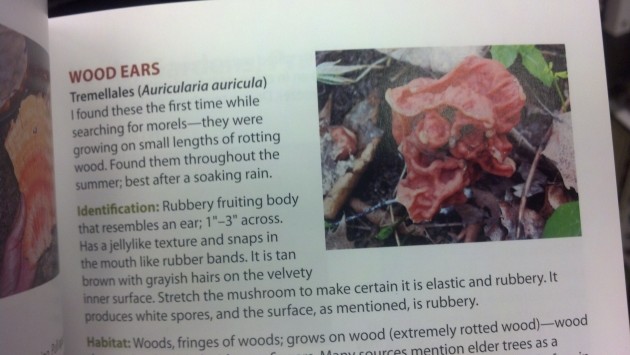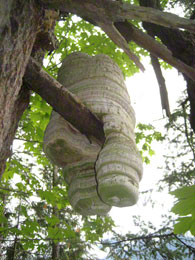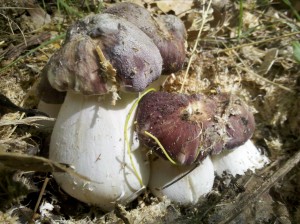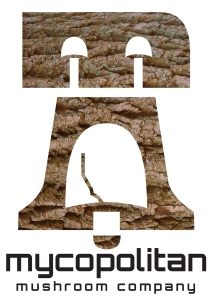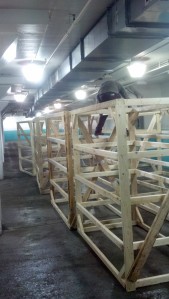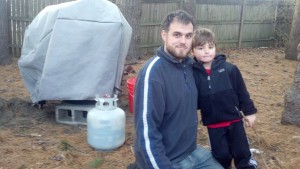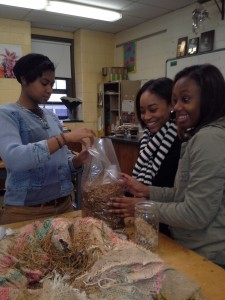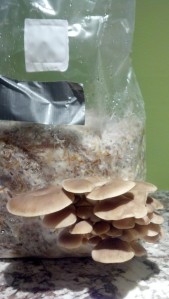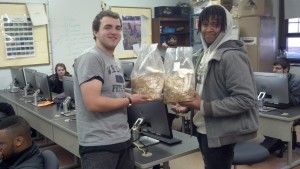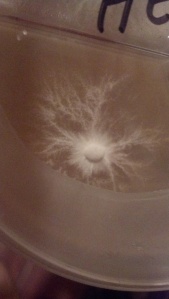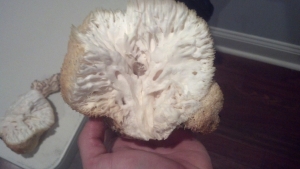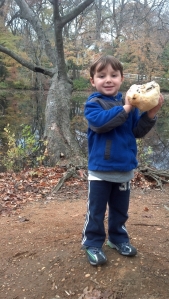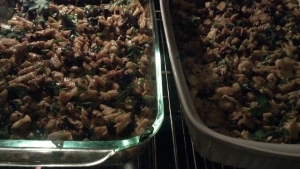While poultry references point us towards many of our favorite polypores (hen of the woods, chicken of the woods, turkey tail), it is royal nomenclature that draws our attention to many of the delicious basidiomycetes in the mushroom world. Few would argue that the King Bolete and closely-related Queen Bolete aren’t the most delectable tubed mushrooms. Then there’s King Stropharia, lord of broccoli, bees, and bacteria, outshadowing the plebeians of his genus. The white button agaricus mushrooms you find at the store dominate the mushroom industry, but they can’t hold a candle to the almond-flavored Prince when it comes to taste.

So it’s no surprise that Pleurotus eryngii, also known as King Oyster, the Royal Trumpet; is the shining example of all an oyster mushroom can be. It’s formidable size makes it a favorite among chefs who can showcase their fancy knife-work in the firm white flesh. My favorite preparations include scallops and bacon. Just seeing those words inspires me to make vegetarian bacon-wrapped scallops. The longer these mushrooms are cooked, the more they caramelize and develop nuttiness.
Given its royal temperament, the king oyster expects things to be a certain way, and therefore it will only grow properly under the care of a doting farmer. Temperatures should remain between 50-60F for most strains, and humidity should not drop below 90% for very long, especially without a non-nutritive casing layer to retain moisture. For most cooks, the ideal King Oyster has a small cap and large stem, and this is achieved by fine-tuning light intensity and CO2 concentration in the growing environment.
Eryngii is uncommon in the wild and only exists in a region from Spain to India. Interestingly, eryngii prefers wild fennel plants and not wood as its growing medium in the wild. Like other oyster mushrooms, it performs well on hardwood sawdust in cultivation.
We grew our first batch of Kings in the fall and they were some of the most delicious mushrooms we’ve ever had. The bags we cased performed much better than those we left uncased. Uncased, they are more likely to form a thick layer of mushroom tissue- a merging of dozens and even hundreds of “aborted” pins (young mushrooms which failed to develop). Though not the kind of thing you want to show off to high-end restaurants, this firm, thick fungal platform is perfectly edible and in fact just as tasty as the properly-grown mushrooms. It’s a bit denser than the mature mushrooms and therefore lends itself very well to mushroom bacon preparation.

Here’s a recipe for Truffled Deviled Eggs with King Oyster Bacon and Crispy Kale (as usual I was in a rush and didn’t measure, so take the amounts with a pinch or two or three of salt).
Makes 36 Deviled Egg Halves
18 Eggs
1 lb. King Oyster Mushrooms (actually the wacky aborted pinset you see above works great)
2 leaves Kale
Salt
Pepper
Paprika
Cumin
2 cloves garlic
Truffle Salt (I prefer white truffle for this recipe; truffles themselves, true truffle oil or other truffle preparation is fine too)
2 tbsp. butter (of course from happy pasture-raised cows who produce delicious yellow butter)
1 tbsp high-heat vegetable oil
1/2 tbsp olive oil
1 cup mayo
1/4 cup mustard (I used a mixture of dijon and german)
Vinegar (white wine or champagne is prob best)
2 tsp Maple Syrup
Preheat oven to 330. Slice the mushrooms into wide thin strips (like 2 mm thick). Melt the butter in a small pot, add high heat oil, a few big pinches of salt and pepper, a couple pinches of smoked paprika and cumin. Set 1/4 of it aside. Drizzle the rest over the mushroom strips in a roasting pan. Make sure the mushrooms are covered and there’s a layer of fat on the bottom of the pan. Throw it in the oven. You’ll be checking on them in 10 minutes.
As mushrooms are roasting, hardboil your eggs. Test an egg before you think they’re ready-nobody likes green eggs. I prefer to slightly undercook the yolk so the cholesterol isn’t totally oxidized. Put them in a cold water bath with some ice cubes when they’re almost done.
There are probably better ways to make kale chips, but what I did turned out tasting great- I just coated them with olive oil, flicked salt and pepper on and hung them off of the shelves in the oven. Took about 4 minutes to crisp up.
Check on the mushrooms. After 15 minutes in the oven they should be sizzling and turning tan. Take the leftover butter concoction and add the maple syrup and minced garlic. Once the mushroom bacon begins to crisp up, turn them all over and drizzle with the butter/maple syrup mixture. Put back in the oven for around 5-8 minutes. Take them out and rest on paper towel. Save that delicious maple mushroom butter for eating with a spoon later.
Peel and halve your eggs, dropping the yolks in a big bowl.
To the yolks add the mayo, mustard, truffle, vinegar, salt, pepper, mush together and load into a pastry bag or a one corner of a freezer bag. Squeeze into the halved egg-whites.
Break up the bacon and kale into whatever size you want and place them into the yolk mixture however you think looks good. Sprinkle a little paprika.
Might also wanna drizzle a couple drops of olive oil or add fried shallots.

The best thing about making deviled eggs is that you get to eat the ugly ones before serving.
Enjoy
